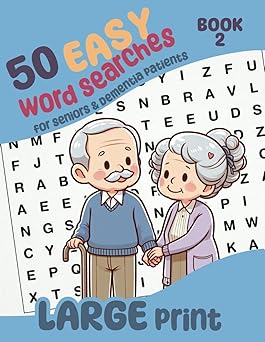Crafting Memory Books for Dementia Support
Memory books provide subtle and friendly reminders to dementia patients. You can fill them with happy and useful memories to help with daily life.


Creating memory books is a heartfelt and effective way to support elders with dementia, sparking reminiscence, fostering emotional connections, and stimulating cognitive function. These personalized books, filled with photos and simple stories, can evoke memories and provide comfort. The long-term memory tends to persist well into dementia as symptoms develop, so pictures that represent old memories will continue to trigger fond memories.


Do Memory Books Work?
Memory books tap into the long-term memory, which often remains intact during dementia. Familiar images and stories can evoke positive emotions and spark meaningful conversations, thereby reducing feelings of isolation. The physical act of flipping through a book engages visual and tactile senses, offering cognitive stimulation without being overwhelming. For caregivers, it’s a meaningful way to bond and share moments of joy.
Choosing Meaningful Content
Select photos and mementos tied to significant life events, like weddings, family trips, or childhood moments. For example, include a picture from a favorite beach trip or a family holiday. Add simple captions in large, clear text, such as “Our 1980 picnic with Grandma.” Keep the content positive and familiar to avoid distress, focusing on memories likely to inspire happiness.
Designing a Simple Layout
Use a sturdy, easy-to-handle photo album or scrapbook with no more than 10-15 pages to avoid overwhelm (you can always make more than one of these with various themes). Place one or two photos per page with bold, short captions. For example, a picture of a pet might read “Our dog, Rusty, 1976.” Use high-contrast colors, like black text on white, for readability. Ensure pages are easy to turn, especially for those with motor challenges.


Engaging Together
Sit with the person to explore the memory book, ideally for 10-15 minutes during a calm time, like after breakfast. Point to the pictures and ask open-ended questions, such as, “What do you remember about this day?” If verbal responses are limited, observe their gestures and expressions for signs of engagement, like a smile. Encourage family members to participate too, making it a shared activity that strengthens bonds.
Updating and Personalising
Periodically add new book pages to maintain interest, such as recent family photos or pictures of a current pet. Tailor the book to their interests. Someone who loves gardening might enjoy a book that is made up entirely of gardening images. Keep it all simple to maintain familiarity, ensuring that the book remains a comforting tool.
This process should be tailored to the individual’s needs, depending on the stage of their dementia. In my personal experience, I used modern technology for this. I filled an Instagram account with old images and helped my mother scroll down the feed and look at the images.
Here are some key tips for making it work for you:
Create the book in a quiet, distraction-free setting
Involve the person if they are able to contribute ideas
Store in an accessible spot for frequent use
Be patient and focus on emotional engagement rather than accuracy
Enjoy the moments of closeness and engagement that this process creates
Useful Resources
Easy Nature Wordsearch
An easy, large print wordsearch, suitable for elders with dementia or other forms of cognitive decline.
A dementia-friendly wordsearch book with a range of simple themes.
An easy word search book with Christian-themed puzzles. Large print and dementia-friendly.
Easy Wordsearch
Easy Christian Wordsearch
Connect
© 2025. All rights reserved.




